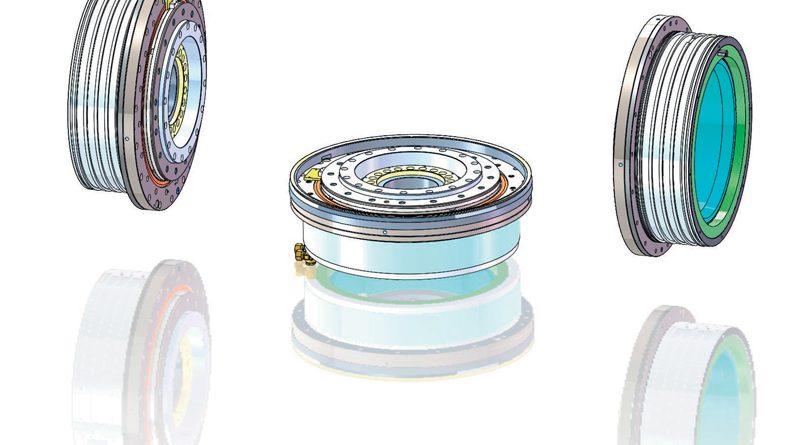Transmission Modules for Rotary Axes
Technai Team will be presenting an innovative project at BIMU: a transmission module for rotary axes featuring a deep integration of its components. The Torque servomotor integrates all functional complementary elements, such as support bearings, encoders, axis locking devices and so on.
The MT-M 500-100 module will be showcased during the event.
by Alma Castiglioni
The idea behind transmission modules for rotary axes recalls and suggests a variation of the basic principle of the applications with Direct Drive motors: the Torque motor (rotor and stator) eliminates/replaces the traditional drive train and enters the machine connecting directly to the rotary element to be driven.
In this process it is up to the manufacturer to integrate the motor with other complementary functional elements, that is, the support bearing, the encoder, the axis locking device, the structure which contains the cooling circuit and so on. It follows that the result will depend on the quality of the selection carried out on these components.
The principle of Technai Team’s transmission modules, however, is that of extracting from the machine the complementary functional elements to associate them with the Torque motor. The project is characterized by the deep integration of the components and the reduction of their number to the essential: the pivot is the design and production of a specific bearing which includes the typical functional elements of a machine tool axis.
In other words, a new industrial component has been designed and manufactured: the torque servomotor for machine tool axes, aimed at machine manufacturers to configure a wide range of application solutions in a fast, simple and competitive way, thanks to the synthesis, even in terms of production costs, which the module enables.
The application: configuration of a two-axis trunnion table
An example of an application of this innovative concept is the project to configure a two-axis trunnion table (Figure 1).
In this case three identical MT-M 500-100 modules are assembled in only two structural elements designed by the machine manufacturer so as to fulfil the following two fundamental conditions: The size of the machine in which the table will be inserted will determine the design of the structural parts which will contain the MT modules; the selection of the size of the motor of the MT module (for every module, a range of stator heights is available according to the required torque) will determine the attainment of the objectives set in the project’s technical specifications.
Of course there are other complementary aspects which need to be solved, but the marked reduction in complexity which can be achieved using MT modules is evident.
The application: configuration of a milling machine work table
An application even simpler than the example described above is the production of a work table for milling machines. Here the MT module will have to be integrated with its supporting basement (for instance, integration in the fixed table of a vertical milling machine), while a work table of the appropriate shape and structure will be integrated on the bearing interface of the rotating axis (Figure 2). The range of MT transmission modules for rotary axes includes three main sizes, corresponding to the respective stator diameter, MT-360, MT-500 and MT-660; each may be equipped with different motor heights and with a package of options to customize the product and adapt it to many different structures and configurations.

